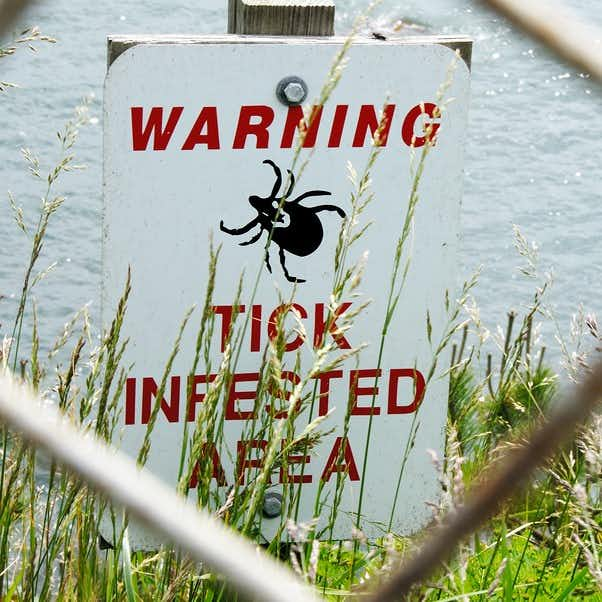
This may be an especially bad summer for Lyme disease, according to disease ecologists. The tick-borne infection caused by the bacterium Borrelia burgdorferi was named Lyme disease after Old Lyme Connecticut. That’s where a cluster of children and adults were identified with strange symptoms including joint pain in 1976.
As a result of this geographic association, many doctors consider this infection specific to New England and perhaps the upper Midwest of the US. That view is too limited, according to a new study published in BMJ Global Health. The analysis of data from 89 studies shows that more than 14 percent of the people in the world have been infected with this spirochete (BMJ Global Health, June 14, 2022).
The highest rate of infection was not in the US at all, but rather in Central Europe, where more than one in five older rural men had antibodies. Other areas with high rates were Eastern Asia at 16 percent and Western Europe with 13.5 percent.
Which Ticks Carry Lyme Disease?
In the US, Lyme disease is transmitted through the bites of infected blacklegged ticks (Ixodes scapularis). On the west coast, the vector is the western blacklegged tick (Ixodes pacificus). The primary culprits in Europe are Ixodes ricinus, whereas Ixodes persulcatus dominates in Asia. Such ticks are very sensitive to alterations in climate (WHO, 2006). Climate change bringing hotter drier summers could increase interactions between ticks and people.
Why Will 2022 Be a Bad Summer?
Why are experts worried that 2022 might be intense? The spirochete, Borrelia burgdorferi, includes white-footed mice as well as white-tailed deer and black-legged ticks in its life cycle. There are lots of mice and deer available to ticks. A mild winter could mean that tick season could be especially bad this year.
A drought in New England led to a drop in the number of ticks in 2020, but 2021 was a worrisome tick season. Maine has already experienced a dramatic increase in tick-related emergency visits compared to this time last year.
An early report from Connecticut suggests that ticks there are also more numerous. Moreover, scientists in upstate New York are also seeing a substantial upswing and anticipate a bad summer.
According to Dr. Saravanan Thangamani, Director of the SUNY Center for Vector-Borne Diseases,
“We are anticipating a real uptick in the number of ticks submitted to our lab. This is going to be a huge year for the ticks. Technically every year is a huge year for the ticks, but we are seeing a gradual increase in the number of ticks humans encounter and submit to the lab. This trend will continue.”
Lyme Disease Is Spreading:
Lyme disease has now spread from New England to the upper mid-west, with some cases as far south as Florida. It has also been identified in California and Washington state. There is a good likelihood it will be a bad summer for Lyme in nearly half of the country.
Approximately 300,000 US residents may be infected every year. Lyme disease can cause serious complications if it is left untreated, but prompt treatment with antibiotics can usually eliminate the pathogen.
The blacklegged tick, also known as the deer tick, spreads Borrelia burgdorferi in the US. This tick can also transmit anaplasmosis, babesiosis and Powassan virus disease. Other tick-borne diseases are also becoming more common.
Why You Should Care:
People who have come down with Lyme disease will tell you that this condition can become chronic and do major damage to the body. Here is a podcast with two physicians who themselves contracted Lyme disease:
Show 1081: What Do You Need to Know About Lyme Disease?
Lyme disease isn’t always easy to diagnose, and it can cause serious long-lasting damage. How can you be alert for this tick-borne infection?
Protecting Yourself During a Bad Summer:
Experts recommend daily tick checks and removal of any ticks with tweezers. Wearing insect repellent is smart when you are out in the woods, but remember that deer ticks happily hang out in yards as well.
That’s why we are big proponents of gaiters! These go on over your shoes and several inches up your pants or legs. They are treated with permethrin so the ticks are discouraged before they can start climbing. Here is an article with lots of details about gaiters and other strategies for preventing tick bites:
Preventing Tick Bites By Wearing Gaiters
Tick bites lead to some very nasty diseases. That’s why preventing tick bites is really important when you go outside. Find out why gaiters can be helpful.
Look Closely!
Young ticks are tiny, no bigger than a poppy seed, so the tick check needs to be extremely thorough. Parents should check their children.
When you find a tick, don’t freak out or use flames or Vaseline. Just use a tick removal tool or a simple tweezer to pull it straight out, gripping it as close to the skin as possible.
If you develop a rash or fever, be sure to tell the doctor about your tick bite. See the doctor if you have such symptoms even if you don’t remember a tick biting you. In a bad summer for Lyme disease, it’s better to be cautious.
Citations
- Dong Y et al, "Global seroprevalence and sociodemographic characteristics of Borrelia burgdorferi sensu lato in human populations: a systematic review and meta-analysis." BMJ Global Health, June 14, 2022. http://dx.doi.org/10.1136/bmjgh-2021-007744
- Lindgren E & Jaenson TGT, "Lyme borreliosis in Europe: influences of climate and climate change, epidemiology, ecology and adaptation measures." WHO, 2006.

